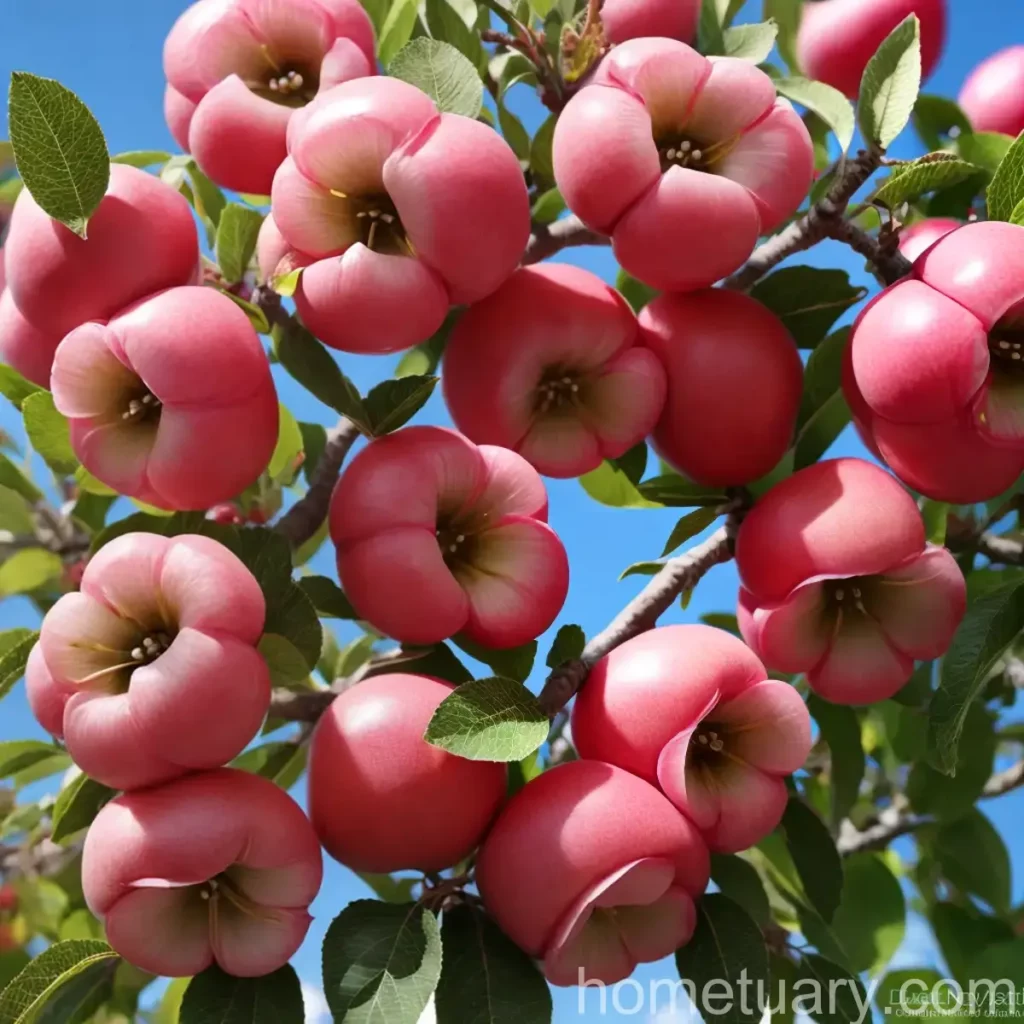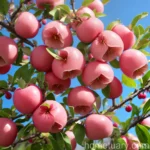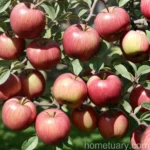Plant Scientist’s Guide to Flowering Crabapple (Malus ‘Leprechaun’)
As a passionate plant scientist, I am fascinated by the diversity and beauty of plants. In this comprehensive guide, I will delve into the world of the flowering crabapple tree, specifically focusing on the Malus ‘Leprechaun’ variety. From its cultural requirements to its uses, diseases, and pruning tips, this guide aims to provide valuable insights for both novice gardeners and experienced enthusiasts. So, let’s embark on an enlightening journey into the captivating realm of the flowering crabapple tree.
What is Plant: Flowering Crabapple (Malus ‘Leprechaun’)?
The flowering crabapple (Malus ‘Leprechaun’) is a charming deciduous tree renowned for its ornamental qualities. It belongs to the Malus genus, which encompasses a diverse array of species and cultivated varieties. The ‘Leprechaun’ variety, in particular, is cherished for its compact size, exquisite blossoms, and vibrant foliage, making it a popular choice for landscapes and gardens.
Key Takeaways – Flowering Crabapple (Malus ‘Leprechaun’)
Before delving into the specifics of the flowering crabapple (Malus ‘Leprechaun’), let’s briefly outline the key takeaways that will be covered in this comprehensive guide:
- Culture – Detailed insights into the cultural requirements of the Malus ‘Leprechaun’ variety.
- Uses – Explore the versatile uses of the flowering crabapple tree in landscapes and gardens.
- Water – Optimal watering practices for maintaining the health and vitality of the tree.
- Sunlight – Understanding the sunlight preferences of the ‘Leprechaun’ variety for optimal growth.
- Fertilizer – Guidelines for fertilizing the flowering crabapple tree to promote robust foliage and blossoms.
- Soil – Insights into the soil requirements and optimal growing conditions for the Malus ‘Leprechaun’.
- Pruning – Essential tips for pruning the tree to maintain its form and promote healthy growth.
- Propagation – Techniques for propagating the flowering crabapple tree to expand its presence in gardens.
- Container Popularity – Exploring the appeal and viability of growing the ‘Leprechaun’ variety in containers.
- Common Diseases – Identification and management of prevalent diseases that affect the flowering crabapple.
- Disease Diagnosis – Understanding the symptoms and diagnostic approaches for crabapple tree diseases.
- Common Pests – Recognition and control measures for common pests that can infest the ‘Leprechaun’ variety.
- Botanist’s Tips – Expert insights and recommendations for cultivating and caring for the Malus ‘Leprechaun’.
- Fun Facts – Discover intriguing and fascinating facts about the flowering crabapple (Malus ‘Leprechaun’).
With these key takeaways in mind, let’s embark on an in-depth exploration of the fascinating aspects of the ‘Leprechaun’ variety, enriched with botanist’s tips, fun facts, and valuable insights.
Culture
Understanding the cultural requirements of the flowering crabapple (Malus ‘Leprechaun’) is essential for nurturing its health and ensuring optimal growth and blooming. From water and sunlight preferences to soil and fertilizer needs, the cultural aspects play a pivotal role in cultivating these enchanting trees.
Water
Proper watering is crucial for the well-being of the flowering crabapple tree. While the frequency of watering may vary based on factors such as climate and soil moisture retention, a general guideline for watering the ‘Leprechaun’ variety involves providing consistent moisture, especially during dry periods. It is essential to monitor the soil moisture levels and ensure that the tree’s root zone remains adequately hydrated without becoming waterlogged.
Key Watering Tips for the Malus ‘Leprechaun’:
– Deeply water newly planted trees to establish a robust root system.
– During periods of drought, supplement the tree with sufficient water to prevent stress and dehydration.
– Avoid overwatering to prevent waterlogged conditions that can lead to root rot.
Sunlight
Flowering crabapple trees, including the ‘Leprechaun’ variety, thrive in locations with ample sunlight. Adequate sunlight exposure is essential for promoting robust growth, blooming, and fruit development. When selecting a planting site for the ‘Leprechaun’ variety, it is advisable to choose a location that receives full or partial sunlight, depending on the specific regional climate and environmental conditions.
Sunlight Guidelines for the Malus ‘Leprechaun’:
– Select a planting site that receives at least 6 hours of direct sunlight daily for optimal growth and blossoming.
– Ensure adequate spacing from surrounding structures and trees to allow ample sunlight penetration to the ‘Leprechaun’ tree.
Fertilizer
Appropriate fertilization can significantly enhance the vigor and blooming of the Malus ‘Leprechaun’. Before applying any fertilizers, it is crucial to assess the nutrient requirements of the soil and adjust the fertilization regimen based on the existing nutrient levels. Incorporating a balanced fertilizer suited for flowering trees can provide the necessary nutrients to support healthy growth and abundant blossoms.
Fertilizer Recommendations for the ‘Leprechaun’ Variety:
– Utilize a balanced, slow-release fertilizer formulated for flowering trees to provide essential nutrients throughout the growing season.
– Apply the fertilizer in early spring before the onset of new growth, following the recommended application rates and guidelines based on the tree’s size and age.
Soil
The soil composition and quality play a fundamental role in the establishment and growth of the flowering crabapple tree. Well-draining soil with good fertility and structure is ideal for the ‘Leprechaun’ variety, fostering healthy root development and overall vitality. It is advisable to conduct a soil test to ascertain the pH levels and nutrient content, allowing for targeted amendments to optimize the soil conditions for the tree.
Soil Requirements for the Malus ‘Leprechaun’:
– Ensure the soil is well-draining to prevent waterlogging and root suffocation.
– Amend the soil with organic matter such as compost to enhance fertility and improve soil structure for optimal root growth.
Pruning
Pruning is an essential practice for maintaining the form, health, and blooming of the flowering crabapple tree, including the ‘Leprechaun’ variety. Proper pruning techniques can promote air circulation, remove diseased or damaged branches, and shape the tree to accentuate its ornamental features. Additionally, routine pruning can stimulate new growth and enhance the overall appearance of the tree.
Pruning Tips for the Malus ‘Leprechaun’:
– Conduct pruning during the dormant season to minimize stress on the tree and promote efficient healing.
– Remove crossing or crowded branches to enhance air circulation and reduce the risk of disease development.
– Utilize sharp, sanitized pruning tools to make clean cuts and minimize the potential for infection.
Propagation
Propagation allows for the expansion and propagation of the Malus ‘Leprechaun’ variety, enabling gardeners and enthusiasts to cultivate new trees from existing stock. While the flowering crabapple tree can be propagated through various methods such as cuttings, grafting, and seed propagation, selecting the most suitable approach is essential for achieving successful propagation results.
Propagation Techniques for the ‘Leprechaun’ Variety:
– Explore the potential of softwood or hardwood stem cuttings as a reliable method for propagating the ‘Leprechaun’ variety.
– Consider grafting onto compatible rootstocks to preserve the distinct characteristics of the ‘Leprechaun’ variety in the propagated trees.
Container Popularity
The compact nature and ornamental appeal of the Malus ‘Leprechaun’ make it a compelling candidate for container cultivation. Growing the ‘Leprechaun’ variety in containers offers a versatile approach for incorporating its captivating features into various outdoor spaces, including patios, balconies, and courtyards.
Advantages of Container Cultivation for the ‘Leprechaun’ Variety:
– Ideal for small gardens and restricted spaces where traditional in-ground planting may not be feasible.
– Provides the flexibility to showcase the tree’s blossoms and foliage in diverse outdoor settings, enhancing visual appeal.
Uses
The flowering crabapple (Malus ‘Leprechaun’) holds a prominent place in landscapes, gardens, and horticultural settings, offering a myriad of uses and applications. From ornamental accents and focal points to ecological contributions, the ‘Leprechaun’ variety embodies versatility and charm.
Landscape Ornamentation
A notable use of the Malus ‘Leprechaun’ is its role as a captivating ornamental feature in landscapes and gardens. The tree’s compact size, abundant blossoms, and colorful foliage make it an excellent choice for adding visual interest, seasonal variation, and a touch of elegance to outdoor spaces. Whether incorporated as a standalone specimen, a flowering border, or a focal point, the ‘Leprechaun’ variety exudes charm and appeal.
Landscape Design Ideas for the ‘Leprechaun’ Variety:
– Utilize the tree as a focal point in garden beds, accentuating its blossoms and form amidst complementary plantings.
– Incorporate multiple ‘Leprechaun’ trees along driveways, walkways, or property boundaries to infuse the landscape with vibrant blossoms.
Ecological Contributions
In addition to its aesthetic allure, the flowering crabapple, including the ‘Leprechaun’ variety, offers valuable ecological contributions. Its blossoms serve as a nectar source for pollinators such as bees and butterflies, fostering biodiversity and supporting the ecosystem. Furthermore, the eventual fruiting of the ‘Leprechaun’ variety can provide sustenance for birds and wildlife, contributing to the ecological balance of the surrounding environment.
Ecological Benefits of the ‘Leprechaun’ Variety:
– Attracts pollinators, enhancing biodiversity and supporting beneficial insect populations.
– Provides ornamental fruits that serve as a food source for birds, contributing to wildlife habitat and food availability.
Common Diseases
While the flowering crabapple tree, including the ‘Leprechaun’ variety, exhibits robustness and resilience, it is susceptible to certain diseases that can impact its health and appearance. Understanding the common diseases and their management is essential for protecting the tree and preserving its ornamental value in landscapes and gardens.
Disease Diagnosis
Prompt diagnosis of diseases that affect the Malus ‘Leprechaun’ is crucial for implementing targeted control measures and preventing the spread of infections. By familiarizing oneself with the symptoms and characteristics of common crabapple tree diseases, gardeners and enthusiasts can effectively identify and address potential health issues.
Key Symptoms of Common Crabapple Tree Diseases:
– Apple Scab – Circular, olive-green or brown lesions on leaves and fruits, often leading to defoliation and fruit deformities.
– Cedar-Apple Rust – Bright orange lesions on leaves and yellow spots on fruits, accompanied by twig cankers and defoliation.
– Powdery Mildew – White, powdery fungal growth on leaves, causing distortion and premature leaf drop.
Disease Management
Implementing proactive disease management strategies can mitigate the impact of common crabapple tree diseases and safeguard the health of the ‘Leprechaun’ variety. Cultural practices, preventive measures, and targeted treatments are integral components of disease management for ensuring the vitality and longevity of the tree.
Effective Disease Management Practices for the ‘Leprechaun’ Variety:
– Select disease-resistant cultivars, such as ‘Leprechaun’, to reduce the susceptibility to prevalent crabapple tree diseases.
– Maintain good air circulation and proper spacing between trees to minimize conditions conducive to disease development.
– Apply fungicidal treatments as a preventative measure, particularly during periods favorable for disease onset.
Common Pests
In addition to diseases, the flowering crabapple tree, including the ‘Leprechaun’ variety, can be vulnerable to infestations by various pests that can compromise its health and vigor. Recognizing common pests and instituting proactive pest management measures is essential for preserving the tree’s ornamental qualities and preventing pest-related damage.
Pest Recognition
Identifying common pests that can afflict the Malus ‘Leprechaun’ is a fundamental step in implementing targeted pest control strategies. By observing the characteristic signs of pest infestations, gardeners and enthusiasts can take timely action to address and manage pest-related issues effectively.
Notable Pests Affecting Crabapple Trees, including the ‘Leprechaun’ Variety:
– Aphids – Small, sap-feeding insects that can cause leaf distortion and the secretion of honeydew, leading to sooty mold.
– Japanese Beetles – Metallic green beetles that feed on foliage, resulting in skeletonized leaves and aesthetic damage to the tree.
Pest Control Measures
Deploying integrated pest management (IPM) practices and employing appropriate control measures can help mitigate pest pressures and protect the Malus ‘Leprechaun’ from detrimental infestations. By integrating cultural, biological, and targeted chemical interventions, gardeners can effectively manage common pests and uphold the health of the tree.
Integrated Pest Management Strategies for the ‘Leprechaun’ Variety:
– Encourage natural predators and beneficial insects that prey on pest species to maintain ecological balance and pest control.
– Utilize insecticidal treatments judiciously and in accordance with pest thresholds to minimize the impact on non-target organisms.
Botanist’s Tips
As a seasoned plant scientist, I am delighted to share valuable tips and insights for cultivating and caring for the Malus ‘Leprechaun’ variety. These expert recommendations aim to enrich the experience of growing the flowering crabapple tree and empower enthusiasts with actionable guidance for nurturing the ‘Leprechaun’ variety in diverse settings.
Botanist’s Tips for Cultivating the ‘Leprechaun’ Variety:
-
Selecting Planting Site: Choose a well-drained location with adequate sunlight exposure to accommodate the ‘Leprechaun’ variety’s growth needs.
-
Soil Preparation: Prior to planting, amend the soil with organic matter and ensure proper drainage to create an optimal growing environment for the tree.
-
Pruning Practices: Emphasize routine pruning to maintain the tree’s form, remove deadwood, and stimulate new growth for prolific blossoms.
-
Watering Considerations: Strike a balance in watering, providing adequate moisture without saturating the soil, to support the ‘Leprechaun’ tree’s health.
-
Fertilization Timing: Apply a balanced fertilizer in early spring to coincide with the tree’s active growth phase, replenishing essential nutrients.
-
Disease Monitoring: Regularly inspect the tree for signs of common diseases and promptly address any symptoms through targeted interventions.
-
Pest Vigilance: Stay attuned to common pests that can affect the ‘Leprechaun’ variety, employing pest control measures when necessary to mitigate infestations.
By incorporating these botanist’s tips into the care regimen for the Malus ‘Leprechaun’, gardeners and enthusiasts can nurture thriving trees and relish the splendor of its blossoms and foliage.
Fun Facts
Delving into the realm of fascinating botanical trivia, here are some captivating and intriguing fun facts about the flowering crabapple (Malus ‘Leprechaun’) that showcase its unique features and enrich the appreciation for this delightful tree.
Engaging Fun Facts about the Malus ‘Leprechaun’ Variety:
-
Blossom Diversity: The ‘Leprechaun’ variety exhibits a captivating array of blossom colors, ranging from delicate pinks to vibrant whites, making it a visual delight in springtime.
-
Compact Growth Habit: Despite its diminutive stature, the ‘Leprechaun’ variety emanates a grand presence with its profusion of blossoms, adding charm to diverse outdoor spaces.
-
Fall Foliage Showcase: As autumn unfolds, the ‘Leprechaun’ tree adorns itself with richly hued foliage, transitioning from lush greens to warm tones of red and gold.
-
Fruit Attraction: The ornamental fruits of the ‘Leprechaun’ variety entice birds and wildlife, contributing to the ecological dynamics of gardens and natural habitats.
-
Year-Round Appeal: Beyond its spring blossoms, the ‘Leprechaun’ tree boasts year-round visual appeal, from its exquisite foliage to its winter silhouette.
Links to External Resources
For further exploration and in-depth knowledge about the flowering crabapple (Malus ‘Leprechaun’) and related topics, I have curated a selection of external resources that encompass informative articles, expert insights, and visual references for enthusiasts and gardeners.
-
Crabapple Varieties by University of Illinois Extension – Explore an extensive guide to crabapple tree varieties, including characteristics and growth habits.
-
Pruning Flowering Trees by University of Minnesota Extension – Gain valuable insights into pruning techniques for flowering trees, enhancing the care and maintenance of the ‘Leprechaun’ variety.
-
Common Diseases of Crabapple Trees by Penn State Extension – Delve into the identification and management of common diseases affecting crabapple trees, including the ‘Leprechaun’ variety.
-
Integrated Pest Management (IPM) for Trees by University of California Agriculture and Natural Resources – Learn about integrated pest management strategies for trees, empowering proactive pest control for the ‘Leprechaun’ variety.
-
Landscape Design with Flowering Crabapples by University of Missouri Extension – Explore creative landscape design ideas incorporating flowering crabapple trees, including the ‘Leprechaun’ variety, as ornamental elements.
-
Pruning Basics by Clemson Cooperative Extension – Delve into fundamental pruning practices and principles to enhance the care and aesthetic appeal of ornamental trees such as the ‘Leprechaun’ variety.
These curated external resources encompass a wealth of information, guidance, and visual references that can enrich the knowledge base and cultivation endeavors of enthusiasts and horticultural aficionados.
In conclusion, the flowering crabapple (Malus ‘Leprechaun’) stands as a captivating arboreal gem, enriching landscapes, and garden settings with its ornamental allure, vibrant blossoms, and ecological contributions. With an understanding of its cultural requirements, management strategies, and expert insights, gardeners and enthusiasts can cultivate thriving ‘Leprechaun’ trees and relish their seasonal splendor throughout the year.
As an advocate for the preservation and appreciation of botanical diversity, I encourage you to embark on your journey of discovery with the enchanting Malus ‘Leprechaun’, embracing its elegance and charm in diverse outdoor settings. Happy gardening and may the ‘Leprechaun’ variety bestow its enchanting presence upon your green spaces!















